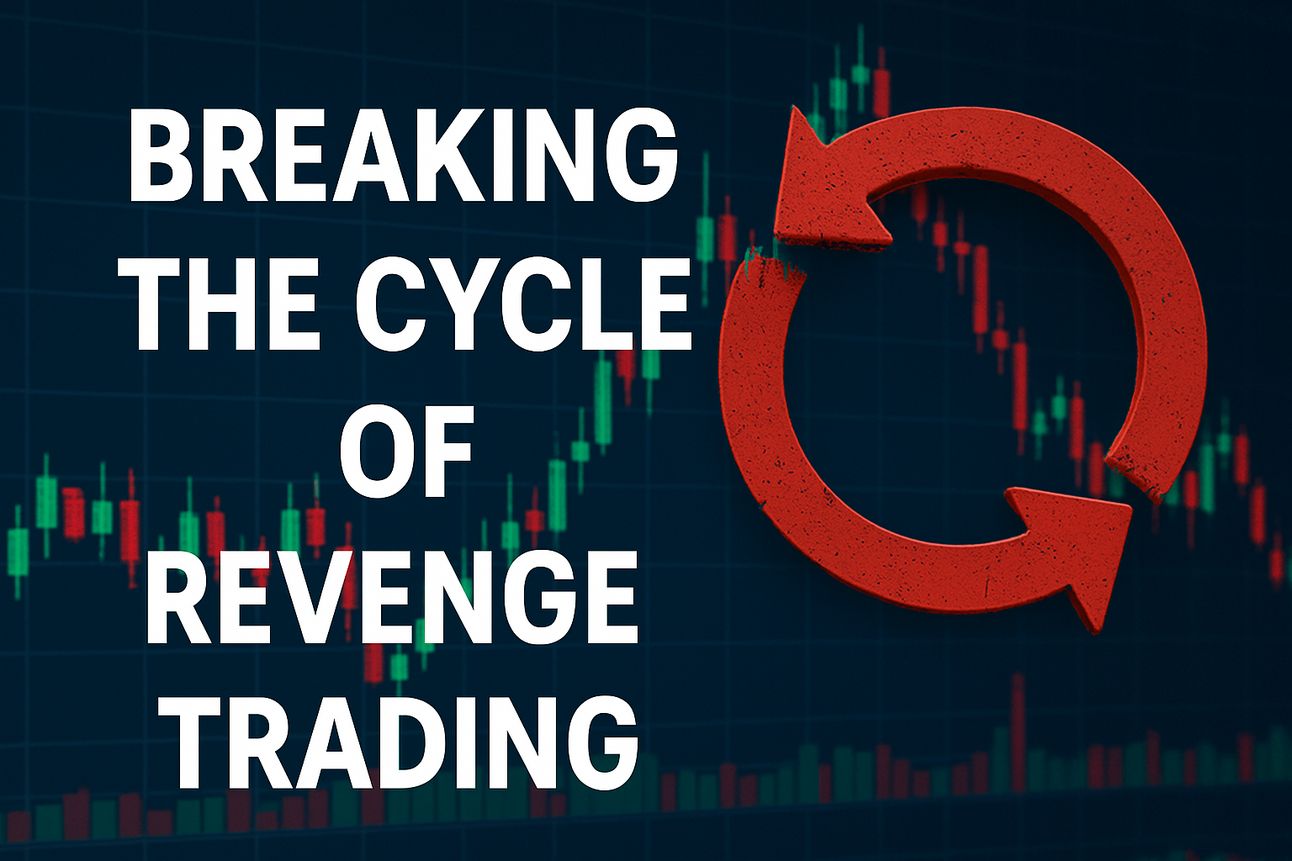We’ve all been there. You take a loss, get frustrated, and feel that itch to “win it back.” You re-enter the market, too fast, too angry, too large. It spirals. And you’re not just battling the chart anymore. You’re battling your own brain.
But here’s the truth: revenge trading isn’t just a flash of emotion, it’s a reinforced habit loop. And the more often it’s repeated, the harder it becomes to break.
Let’s talk about why.
Why the Brain Loves a Fight It Can’t Win

Revenge trading isn’t just about anger, it’s about neural conditioning. Each time you take a loss and jump right back in with heightened emotion, your brain builds an association: loss → risk → potential reward. It’s the same dopamine loop that drives gambling addiction.
Research shows that brain regions involved in reward and loss processing, such as the medial prefrontal cortex and nucleus accumbens, are activated during decision-making after monetary loss. This overlap is linked to compulsive behaviors, especially when individuals anticipate a chance to recover losses. In trading, that belief is deadly.
You aren’t calming down after the loss. You’re preparing for war.
source: nationallibraryofmedicine
Habits Form Faster Than You Think
One bad revenge trade isn’t the end of the world. But repeat it enough, and your brain wires it as a pattern.
This loop often looks like:
Loss triggers emotional discomfort
Immediate re-entry = emotional relief (temporary)
Small win = dopamine hit (positive reinforcement)
Habit formed: chase → relief → reward
This becomes more dangerous when the occasional revenge trade “works.” You win back a loss, and your brain says, See? This is how we fix things. And so, you chase again. Until it doesn’t work. Until it snowballs.
Why Traders Keep Falling Into It (Even the Pros)

Revenge trading isn’t exclusive to newbies. Even experienced traders, prop desk veterans, funded traders, long-time retail players, can fall into this trap.
Why? Because it preys on our deepest desire: control.
You just got stopped out. Now you’re trying to reclaim the narrative. To undo the damage. But the market doesn’t care about your story, and every attempt to “make it right” only tightens the noose.
Revenge trading feels like control. But it’s actually desperation disguised as decisiveness.
What Breaking the Cycle Actually Looks Like
So how do you stop?
Not by telling yourself “don’t do it.” That rarely works. Instead, you need interruptions in the habit loop, points where you override the automatic response.
Here’s what works (backed by real behavioral research):
1. Insert Time Delays
Implement a rule: after any loss, no new trades for 15–30 minutes. Physically stand up, walk away, or close your platform. Even better, automate it. Some trading platforms let you set trade pauses. Use them.
This interrupts the habit at its most vulnerable point: the reactivity phase.
2. Pre-Commit to Risk Rules
Don’t just have stop-losses. Have recovery caps. For example: if you hit -2R on the day, you’re done. No exceptions. This sets boundaries for how far a revenge loop can go.
3. Track Your Emotional Triggers
Keep a “psych log.” Each day, record trades that felt reactive. Write what triggered it, was it a specific setup failure? A missed entry? A tweet? Over time, you’ll spot patterns in your mental setups, not just chart ones.
4. Make Consequences Visible
Losses hurt. But repeated losses from revenge trading? Those can be devastating. Quantify the cost. How much has revenge trading cost you over the past month? Over your career?
Seeing that number in black and white changes how you think about “just one more trade.”
Turning the Corner Starts With Interrupting the Spiral
For many traders, the biggest challenge isn’t the strategy, it’s what happens right after a loss. That critical moment when frustration creeps in, logic blurs, and the next trade becomes more about “getting it back” than following a plan.
It’s in those moments that revenge trading takes root.
The good news? You don’t need to overhaul your trading system to avoid it. In fact, small behavioral shifts can break the cycle. One of the most effective is adding a cool-off period, just 15 to 20 minutes of zero screen time after a stop-out. Walk away, breathe, let the emotional charge settle.
Another powerful trick? Reading your last journal entry before you enter your next trade. It reminds you of your process, your triggers, and why forcing a setup never ends well.
These micro-habits might sound simple, but over time, they stack up. And they could be the difference between progressing through a challenge or resetting for the fourth time this quarter.
Why This Matters Now More Than Ever
In volatile markets, like what we’re seeing now with tariff shocks, recession rumors, and central bank policy shifts, emotional trades become even more tempting. You get chopped out by volatility, and you want back in fast.
But that’s when revenge trading does the most damage. It’s not just the losses. It’s the way they multiply when fueled by panic and ego.
The good news? Once you name it, you can change it.
Final Thought: Win or Lose, You’re Still in Control
The market isn’t your enemy. The chart isn’t mocking you. But your brain? If unchecked, it absolutely will sabotage you.
Revenge trading is sneaky because it feels like action. It feels like you're fixing something. But real power comes from restraint. From walking away. From seeing the setup, not the scorecard.
Break the loop. Rewire the habit. And start trading like the person you know you can become, one disciplined trade at a time.

